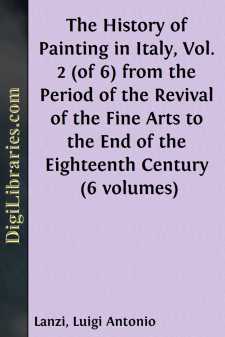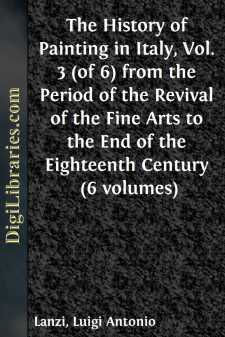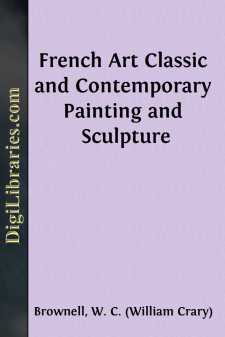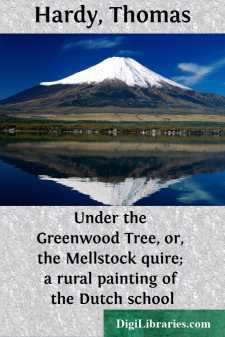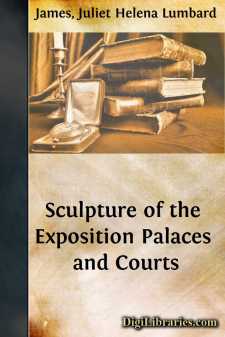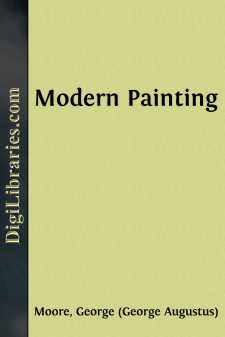Categories
- Antiques & Collectibles 13
- Architecture 36
- Art 48
- Bibles 22
- Biography & Autobiography 813
- Body, Mind & Spirit 142
- Business & Economics 28
- Children's Books 17
- Children's Fiction 14
- Computers 4
- Cooking 94
- Crafts & Hobbies 4
- Drama 346
- Education 46
- Family & Relationships 57
- Fiction 11829
- Games 19
- Gardening 17
- Health & Fitness 34
- History 1377
- House & Home 1
- Humor 147
- Juvenile Fiction 1873
- Juvenile Nonfiction 202
- Language Arts & Disciplines 88
- Law 16
- Literary Collections 686
- Literary Criticism 179
- Mathematics 13
- Medical 41
- Music 40
- Nature 179
- Non-Classifiable 1768
- Performing Arts 7
- Periodicals 1453
- Philosophy 64
- Photography 2
- Poetry 896
- Political Science 203
- Psychology 42
- Reference 154
- Religion 513
- Science 126
- Self-Help 84
- Social Science 81
- Sports & Recreation 34
- Study Aids 3
- Technology & Engineering 59
- Transportation 23
- Travel 463
- True Crime 29
The History of Painting in Italy, Vol. 2 (of 6) from the Period of the Revival of the Fine Arts to the End of the Eighteenth Century (6 volumes)
Description:
Excerpt
ROMAN SCHOOL.
I have frequently heard the lovers of art express a doubt whether the Roman School possesses the same inherent right to that distinctive appellation as the schools of Florence, Bologna, and Venice. Those of the latter cities were, indeed, founded by their respective citizens, and supported through a long course of ages; while the Roman School, it may be said, could boast only of Giulio Romano and Sacchi, and a few others, natives of Rome, who taught, and left scholars there. The other artists who flourished there were either natives of the cities of the Roman state, or from other parts of Italy, some of whom established themselves in Rome, and others, after the close of their labours there, returned and died in their native places. But this question is, if I mistake not, rather a dispute of words than of things, and similar to those objections advanced by the peripatetic sophists against the modern philosophy; insisting that they abuse the meaning of their words, and quoting, as an example, the vis inerti?; as if that, which is in itself inert, could possess the quality of force. The moderns laugh at this difficulty, and coolly reply that, if the vis displeased them, they might substitute natura, or any other equivalent word; and that it was lost time to dispute about words, and neglect things. So it may be said in this case; they who disapprove of the designation of school, may substitute that of academy, or any other term denoting a place where the art of painting is professed and taught. And, as the learned universities always derive their names from the city where they are established, as the university of Padua or Pisa, although the professors may be all, or in great part, from other states, so it is with the schools of painting, to which the name of the country is always attached, in preference to that of the master. In Vasari we do not find this classification of schools, and Monsignor Agucchi was the first to divide Italian art into the schools of Lombardy, Venice, Tuscany, and Rome. He has employed the term of schools after the manner of the ancients, and has thus characterised one of them as the Roman School. He has, perhaps, erred in placing Michel Angiolo, as well as Raphael, at the head of this school, as posterity have assigned him his station as chief of the school of Florence; but he has judged right in classing it under a separate head, possessing, as it does, its own peculiar style; and in this he has been followed by all the modern writers of art. The characteristic feature in the Roman School has been said to consist in a strict imitation of the works of the ancients, not only in sublimity, but also in elegance and selection; and to this we shall add other peculiarities, which will be noticed in their proper place. Thus, from its propriety, or from tacit convention, the appellation of the Roman School has been generally adopted; and, as it certainly serves to distinguish one of the leading styles of Italian art, it becomes necessary to employ it, in order to make ourselves clearly understood....


